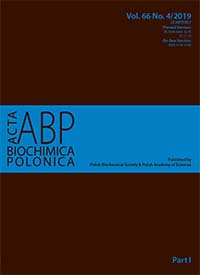Analysis of BNIP3 and BNIP3L/Nix expression in cybrid cell lines harboring two LHON-associated mutations.
Abstract
Mitochondria are key players in cell death through the activation of the intrinsic apoptosis pathway. BNIP3 and BNIP3L/Nix are outer mitochondrial membrane bifunctional proteins which because of containing both BH3 and LIR domains play a role in cellular response to stress by regulation of apoptosis and selective autophagy. Leber’s Hereditary Optic Neuropathy (LHON) is the most common mitochondrial disease in adults, characterized by painless loss of vision caused by atrophy of the optic nerve. The disease in over 90% of cases is caused by one of three mutations in the mitochondrial genome: 11778G>A, 3460G>A or 14484T>C. The pathogenic processes leading to optic nerve degeneration are largely unknown, however, the most common explanation is that mtDNA mutations increase the apoptosis level in this tissue. Here we present the results of analysis of BNIP3 and BNIP3L/Nix proteins in cells harboring a combination of the 11778G>A and the 3460G>A LHON mutations. Experiments performed on cybrids revealed that BNIP3 protein level is decreased in LHON cells compared to controls. CCCP treatment resulted in apoptosis induction only in control cells. Moreover, we also noticed reduced level of autophagy in LHON cybrids. The presented results suggest that in cells carrying LHON mutations expression of proteins involved in regulation of apoptosis and autophagy is decreased what in turn may disturb cell death pathways in those cells and affect cellular response to stress.
Acta Biochimica Polonica is an OpenAccess quarterly and publishes four issues a year. All contents are distributed under the Creative Commons Attribution-ShareAlike 4.0 International (CC BY 4.0) license. Everybody may use the content following terms: Attribution — You must give appropriate credit, provide a link to the license, and indicate if changes were made. You may do so in any reasonable manner, but not in any way that suggests the licensor endorses you or your use.
Copyright for all published papers © stays with the authors.
Copyright for the journal: © Polish Biochemical Society.


